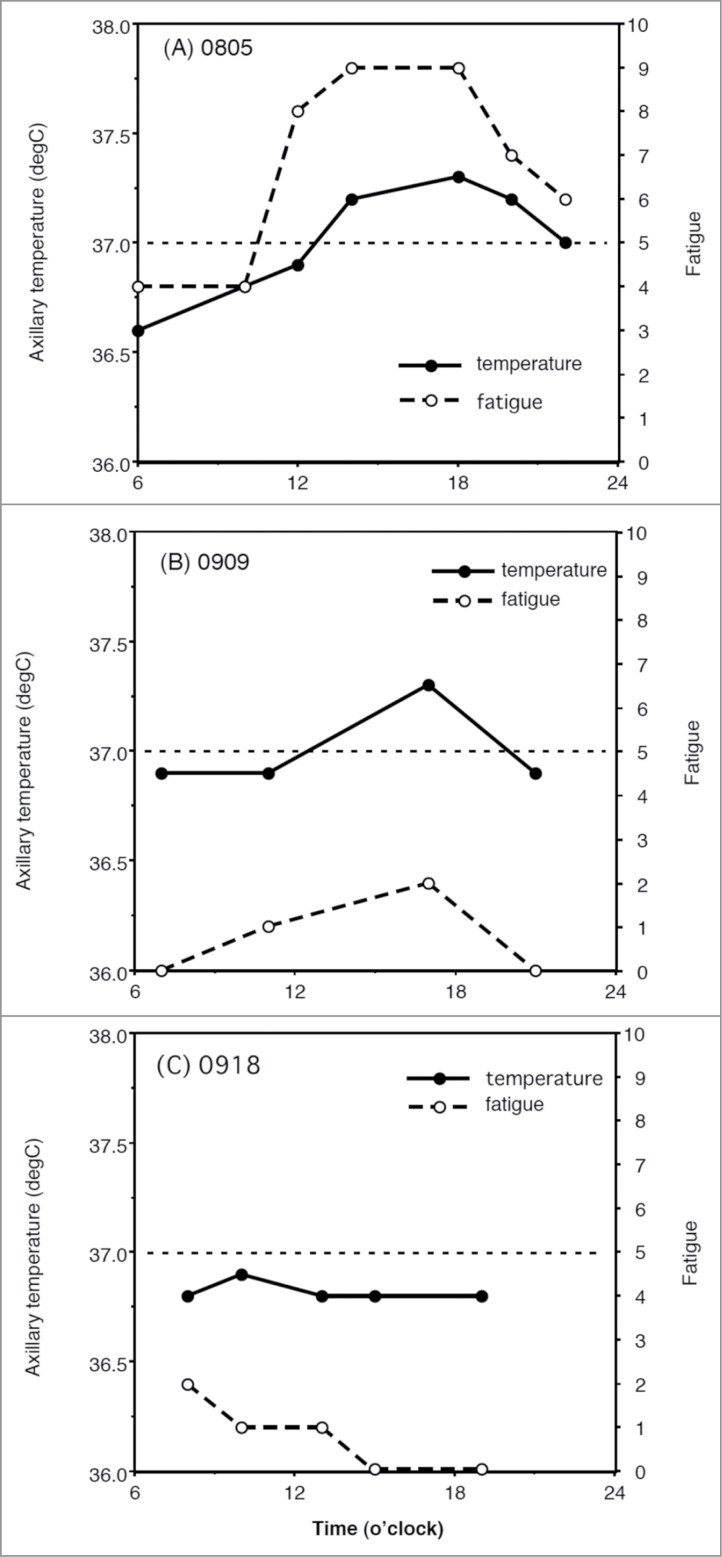Figure 7.
Inhibitory effects of tandospirone, a 5-HT1A receptor agonist, on the axillary temperature (Ta) and severity of fatigue in a 30-year-old woman with psychogenic fever. Vertical lines show axillary temperature (black line) and fatigue level (dotted line, with numerical rating scale in which 10 represents the most severe fatigue imaginable and 0 represents none). (A) Before the treatment (August 5th), (B) After tandospirone treatment Sep. 9th, and (C) After tandospirone treatment Sep. 18th. The patient started to take tandospirone, a 5-HT1A agonist, 30 mg from Sep. 2nd and 60 mg from Sep. 9th. © Japanese Society of Psychosomatic Internal Medicine. Permission to reuse must be obtained from the rightsholder. Before the treatment, as her Ta induced 0.5°C increased from 36.8°C to 37.3°C, her fatigue level increased remarkably from 4 to 9. She asked for the treatment of her low-grade fever hypochondriacally (A). However, after the treatment with tandospirone, she became less concerned about her low-grade fever, when although her Ta increased from 36.8°C to 37.3°C, her fatigue level increased from just 1 to 2 (B). Her Ta did not exceed 37°C (C).

